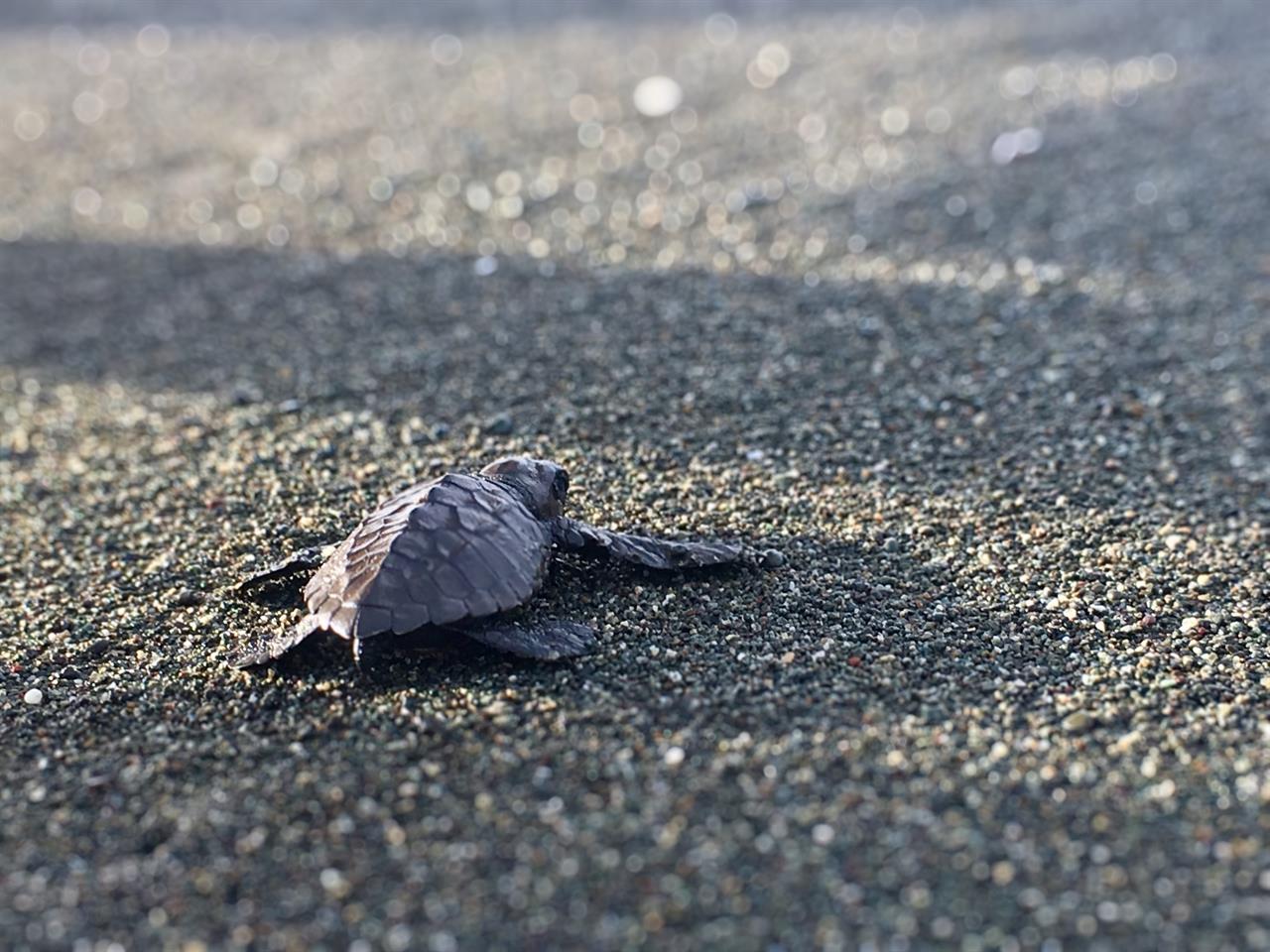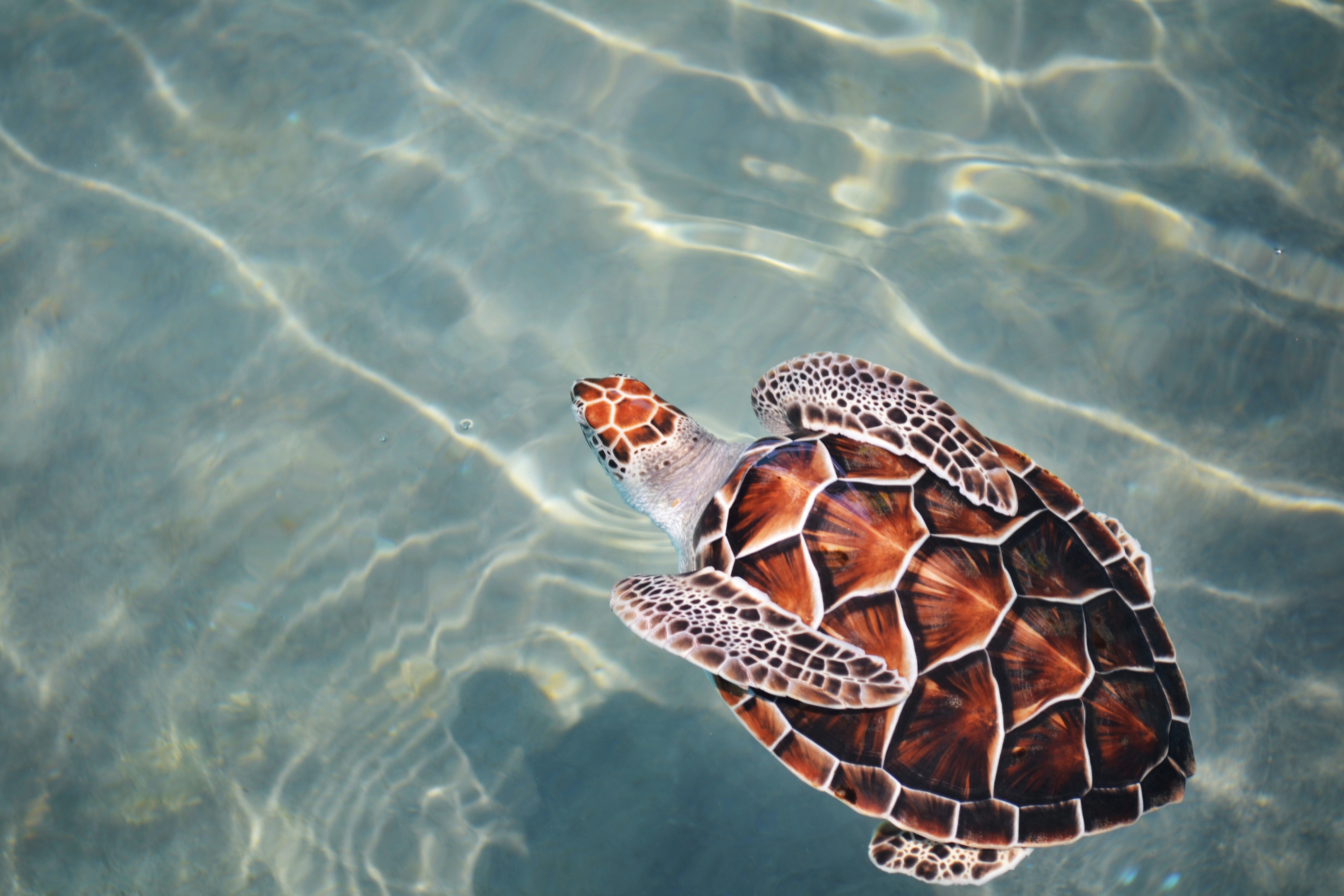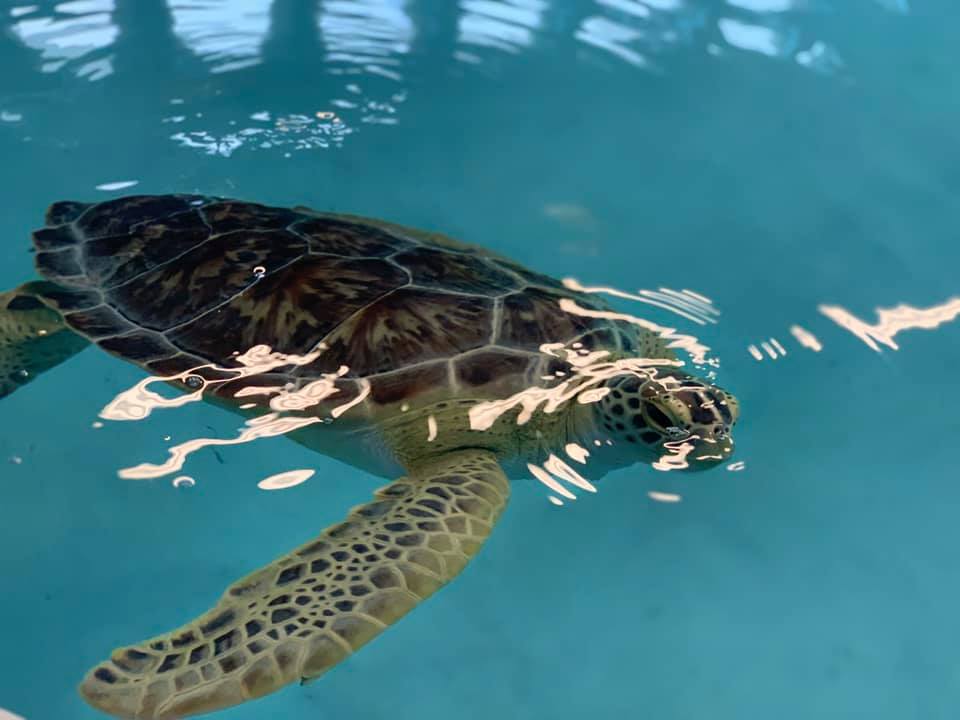Learn when and where sea turtle nesting season happens in Florida, how to spot these endangered creatures safely, and what you can do to help protect them during your visit.
From black bears roaming the misty trails of the Smoky Mountains to the wild horses trotting along the dunes of North Carolina's Outer Banks, there's something unforgettable about seeing animals in their natural habitat. It's one of the great joys of exploring the U.S.
Along Florida's Gulf Coast, the star of the show arrives quietly. Each year from May through October, sea turtles return to Pensacola Beach to nest under the moonlight, and weeks later, their hatchlings emerge for a high-stakes sprint to the sea.
No fanfare, no fences, just instinct and nature on full display. Here's a quick summary of the main points behind this remarkable natural display:
Season
- Nesting: May to October
- Hatchlings: ~2 months after nesting
Species
- Loggerhead: Most common
- Green: Herbivorous, long migrations
- Leatherback: Largest, jellyfish diet
- Kemp's Ridley: Smallest, rarest
- Hawksbill: Colorful shell, endangered by trade
Threats
- Habitat loss
- Pollution
- Fishing bycatch
- Human disturbance
How to Help
- Use turtle-safe lighting
- Avoid flash or approaching turtles
- Flatten sandcastles, fill holes
- Remove trash and food
- Report issues: 1-888-404-3922
Where to Go
- Visit Navarre Beach Sea Turtle Conservation Center
- Take guided eco-tours
Extra info
- Sea turtle nesting is a quiet coastal highlight
- Visitors play a key role in conservation
At Pensacola Beach Properties, we don't just offer a great selection of Pensacola Beach rentals; we've also got the kind of local tips that can seriously level up your trip.
As local experts, we're here to show you the best of what Pensacola Beach has to offer. For more insider ideas, check out our destination blog. We cover everything from top pet-friendly spots to the best places to eat, drink, and enjoy the local nightlife.
If you're planning a visit and want to witness Sea Turtle Nesting Season in Florida without disturbing it, this guide walks you through everything: when to go, what to look for, and how to help protect one of Florida's most remarkable seasonal visitors.

When It Happens
The majority of sea turtle nesting season in Florida lasts from May through October. During this time, female sea turtles crawl up the beach to lay their eggs in the sand.
The nesting process takes several hours, during which the turtle digs a hole, lays her eggs, and covers the nest before returning to the ocean.
Key Takeaways:
- Nesting occurs between May and October.
- Female turtles return to shore to lay eggs.
- Each nesting session can last several hours.
Hatchling Journey
About two months later, the sea turtle hatchlings emerge and begin their journey to the ocean.
This is a crucial time as they are vulnerable to predators, environmental risks, and even interference from beachgoers. Other marine species, animals, and even beachgoers can pose dangerous threats to these baby sea turtles.
Key Takeaways:
- Hatchlings emerge roughly two months after eggs are laid.
- The journey to the ocean is perilous.
- Human activity can endanger hatchlings.
Florida's Five Sea Turtle Species
Florida is home to five species of sea turtles, all protected under the Endangered Species Act: the Loggerhead, Green, Leatherback, Hawksbill, and Kemp's Ridley sea turtles.
Loggerheads are the most common species of sea turtle that nest on Florida's beaches, followed by Greens and Leatherbacks.
Key Takeaways:
- Florida hosts five endangered sea turtle species.
- Loggerheads are the most common nester.
- All five are protected by law.
1. Loggerheads
Loggerheads are known for their bulky shapes, weighing around 275 pounds and having shells up to three feet long.
They are named for their large heads, which are often a reddish-brown color and feature powerful jaws that allow them to crush the hard shells of their prey. These sea turtles are slower swimmers and often fall prey to sharks, so they may be seen missing a flipper or a piece of their shell.
Key Takeaways:
- Bulky, reddish-brown with strong jaws.
- Weigh around 275 pounds.
- Often injured due to predators.
2. Green Turtles
Green turtles are named after their green fat, where they store eggs. These creatures are large yet less bulky than loggerheads, as they can weigh an average of 350 pounds with shells up to 3.3 feet long.
One distinguishing feature of a green turtle is that they are primarily herbivores, feeding on seagrasses and algae, which gives their fat a greenish coloration. Green sea turtles are found in tropical and subtropical waters around the world and are known for their long migrations between nesting and feeding grounds.
Key Takeaways:
- Named after the green color of their body fat.
- Mostly herbivores, feeding on seagrass.
- Long-distance migrators.
3. Leatherbacks
Leatherback sea turtles are large and interesting creatures, weighing anywhere from 500 to 1500 pounds and averaging 6 feet in length.
They primarily feed on jellyfish. These sea turtles are distinct from green and loggerhead sea turtles as they are more adventurous swimmers and can travel up to 3,000 miles from their nesting beaches. These sea turtles are known for their unique leathery shells, which are covered in small bones and lack the hard scutes found on other sea turtles.
Key Takeaways:
- Largest sea turtle species.
- Feed mostly on jellyfish.
- Can swim up to 3,000 miles.
4. Kemp's Ridley
Kemp's Ridley sea turtles are actually the rarest sea turtle in the world, and unfortunately, they are also the most endangered.
These turtles are smaller, only weighing 85 to 100 pounds, and they are known for their unique synchronized nesting behavior, where thousands of females come ashore to lay eggs on a single beach.
Key Takeaways:
- Smallest and most endangered species.
- Weigh between 85 and 100 pounds.
- Known for mass nesting events.
5. Hawksbill
Hawksbill sea turtles are smaller tropical turtles with beautiful, tortoise-colored shells.
They are named for their distinctive narrow pointed beaks that resemble those of a hawk. These animals can weigh 100 to 200 pounds once fully grown, and their shells are often used to make jewelry or decorations in European and Asian countries.
Key Takeaways:
- Known for their beautiful shells.
- Beak resembles that of a hawk.
- Often exploited for shell trade.

Why Sea Turtles Are Endangered
An endangered species is one threatened by extinction due to factors such as habitat loss and degradation, pollution, fishing bycatch, coastal development, predators, and human interference.
Some major threats to sea turtles are identified as fisheries, coastal development, pollution, and direct attacks. Florida residents and visitors should protect sea turtles and their homes by assisting in conservation efforts aimed at protecting their nesting beaches and reducing bycatch in fishing gear.
Key Takeaways:
- Sea turtles face multiple threats.
- Human development and pollution are major factors.
- Conservation efforts are vital.
Tips to Protect the Turtles
a) Lighting and Behavior
Thanks to the Endangered Species Act, measures are in place to protect sea turtles. One of the most important ways to help sea turtles have a safe and successful nesting season is by using sea turtle-friendly lighting on the beaches.
This lighting helps ensure the hatchlings can easily find their way to the water without getting lost. Beachgoers need to avoid approaching sea turtles and using lights or flash photography near them.
Key Takeaways:
- Use turtle-friendly lighting.
- Avoid lights and flash near turtles.
- Never approach nesting turtles.
b) Beach Clean-Up
Also, filling in holes is a great way to prevent these turtles from falling in and getting stuck on their way to the water.
Flattening sandcastles and removing beach gear and toys will also ensure safe conditions for these sea turtles moving across the sand.
Key Takeaways:
- Fill holes in the sand.
- Flatten sandcastles.
- Remove beach gear overnight.
C) Report Threats
Another way to protect the turtles is by removing trash and food that can attract unwanted pests. Raccoons, foxes, and coyotes are attracted to food leftovers and waste; these animals are also responsible for destroying sea turtle eggs.
If you encounter a threat to a sea turtle or a sick or injured one, be sure to report this. You can report these disturbances on Florida Beaches to the Florida Wildlife Commission at 1-888-404-3922.
Key Takeaways:
- Clean up food and trash.
- Predators are drawn to waste.
- Report turtle issues to wildlife authorities.

Protecting Turtles the Right Way
To witness a sea turtle nest or a hatchling's first steps is to be reminded of nature's quiet dramas, where survival hinges on instinct and each grain of sand matters. It's not just a wildlife encounter; it's a privilege.
Whether you're a visitor catching a glimpse or a local stewarding your shoreline, your actions ripple far beyond the beach. Small gestures like dimmed lights, cleared paths, and quiet observation help carry an ancient species forward.
Just as importantly, all of this should be done with care, respect, and a commitment to responsible tourism. Protecting sea turtles means protecting the ecosystem they rely on.
Key Takeaways:
- Sea turtle nesting is a rare and moving natural event.
- Thoughtful behavior by humans makes a measurable impact.
- Each of us plays a role in keeping Florida's coastal story alive.
- Responsible travel helps protect fragile marine environments.

Enjoy Pensacola Beach Like Never Before!
When you're in town, stay like a local in one of Pensacola's many stellar vacation rentals.
At Pensacola Beach Properties, we offer a wide selection of the best short-term rentals, including Pensacola Beach rentals and beachfront options. Staying with us, all you have to do is kick back, relax, and soak in the Gulf Coast vibes to the fullest.


